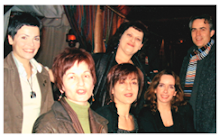April 2008, By Harriet Swain, Times Higher Education
Most of the teaching methods that help students with dyslexia are simply matters of good teaching practice, says Katherine Hewlett, director of the AchieveAbility Project.
Techniques such as using bullet points, breaking work into small sequential steps and having clear learning outcomes are likely to help any student learn more effectively, she says. “Some students are not very text based: some are very visual, some very experiential. They learn by doing,” she says. There are many practical ways of helping students with dyslexia, such as using larger font sizes and clearer fonts on printouts, putting lecture notes on coloured paper (for many of these students, black print on white pages can “jump”) and explaining things in terms of the big picture.
The AchieveAbility National Project, has identified the benefits of techniques such as mind mapping and getting students to learn from one another. For Jamieson-Cook, having things explained visually and verbally is far more effective than writing on a board. “Videos, podcasts, talking books are all great,” she says. She would like lecturers to be more flexible in how they are prepared to receive information. She has tried experimenting with different ways of presenting an essay: speaking it and burning it on a CD, producing it in an interview format, or as notes or a diary.
To read the full article please click:
http://www.timeshighereducation.co.uk/story.asp?sectioncode=26&storycode=401343&c=1


No comments:
Post a Comment